
Making sports into drama (and games?)
An anime analysis from a game design perspective
I admit: I am a great sports anime nerd (and I’ve previously written about the volleyball anime Haikyuu and its fandom) – something that also affects my thinking around game design. What makes sports anime so good – better than watching the sports themselves – is that they usually combine the thrill and achievements of those sports with portrayal of the characters performing them. For me, that adds an invaluable component, since I’m also a character and fictional relationships nerd.
After watching seventeen anime series about sports (sorry, not sorry), I’ve become particularly interested in how the portrayal of sports setups and their (eventual) game design – meaning the design of the game played, for instance soccer or baseball – influences the ability to create compelling drama. It seems like some sports actually make for better content, and this is what I will discuss in this blog post. Of course, to make a really thorough analysis, more time would’ve been needed, so consider this a scratch on the surface and my thoughts so far.
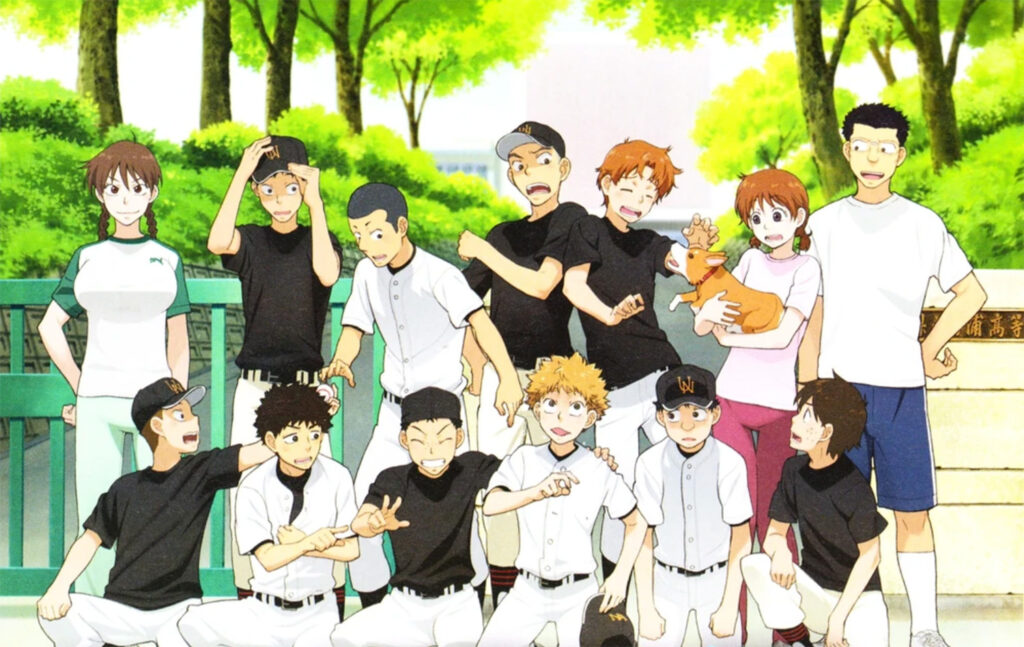
I’ve categorized the series based on how much of the dramatic content focuses on the game or sport itself and how much it relies on other factors, such as relationships between characters outside of sports. I’ll put my main focus on the series that primarily revolve around the sport. Many are based on manga, but not all. (Whether the series originates as manga or not might actually also affect the content, but it’s not something that I’ll go into in this post.)
Categorizing the shows
Series where the drama is primarily built around the content of the sport:
- Ookiku Furikabutte/Big Windup (baseball)
- Diamond no Ace/Ace of the Diamond (baseball)
- Haikyuu!! (volleyball)
- Kuroko no Basket/Kuroko’s Basketball (basketball)
Series where the drama is built around a combination of the sport’s content and other factors:
- Kaze ga Tsuyoku Fuiteru/Run with the Wind (running)
- Tsurune: Kazemai Koukou Kyuudoubu (archery)
- Yuri!!! on Ice (figure skating)
- 2.43: Seiin Koukou Danshi Volley-bu/2.43: Seiin High School Boys Volleyball Team (volleyball)
- Days (soccer)
- Re-main (water polo)
- Ping Pong the Animation (ping pong)
Series where the drama is primarily built around content outside of the sport:
- Free! (swimming)
- Hoshiai no Sora/When Stars Align (soft tennis)
- Keppeki Danshi! Aoyama-kun/Clean Freak Aoyama-kun (soccer)
- Cheer Danshi!!/Cheer Boys!! (cheerleading)
- Bakuten!!/Backflip!! (rhythmic gymnastics)
- Taisou Zamurai / The Gymnastics Samurai (gymnastics)
It’s interesting to see that the focus on sports content could in part be related to which target group the series is aimed towards. It seems like shounen anime (“for boys”) has a larger focus on sports content, whereas shoujo (“for girls”) and seinen (“for grown-ups”) revolve more around relationships.
Could set-based sports with clear positions be easier to dramatize?
Now, let’s dive into the ones that are focusing mainly on the sports content. Haikyuu! (volleyball), Ookiku Furikabutte (baseball), and Diamond no Ace (baseball) are the series that are most focused on portraying the sport itself, with Ookiku Furikabutte taking this to the extreme, by providing detailed depictions of team players, tactics, and strategies. Diamond no Ace follows suit with a similar ambition, but a narrower range when it comes to depicting players’ emotions, thoughts, and intentions. Haikyuu! is more humorous and centered on player relationships, but its primary focus is still on portraying the game’s content.
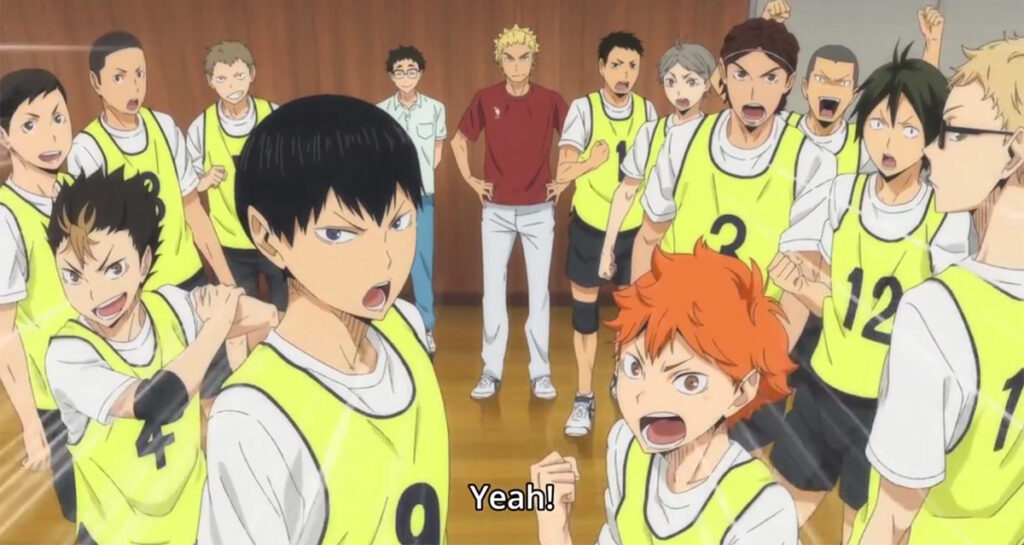
Both volleyball and baseball translate well into anime format. Volleyball’s set-based play makes it easy to create exciting match portrayals. The game involves turn-taking and players’ positions on the court, including who serves and rotates, creating clear recurring moments of suspense. Since the objective is to win the most sets out of a predetermined number, the outcome of a match isn’t known until the decisive set is played.
The psychological play and complexity
In baseball, the psychological play between a team’s battery (pitcher + catcher) and the opposing team’s batters, is well-suited for in-depth depictions of the individuals behind these roles, portraying their thoughts and plans. There’s something compelling in every encounter between the battery and batter – it’s both a psychological and a skill-based game. The collaboration between pitcher and catcher is also interesting to portray, as it involves wordless communication about how they will collectively strike out the batter. Both the battery and the batter are under high pressure in these situations, providing a foundation for intriguing scenes.
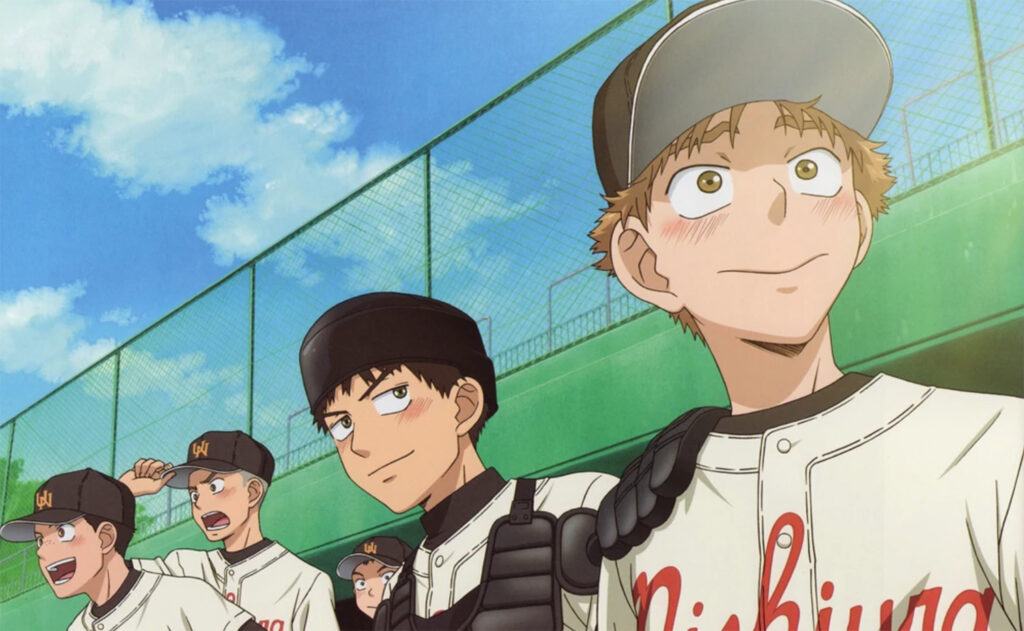
The complexity of baseball could be seen as a disadvantage due to its difficulty to comprehend, but it’s a double-edged sword, since the complexity also adds excitement. Baseball matches as a whole can become slow, especially if the teams are adept at defense and don’t allow scoring hits. However, in anime, unlike in reality, there’s the possibility to cut or quickly summarize dull parts of the match.
Baseball and volleyball gameplay loops
A Gameplay Loop is a game design term that is used to describe the repetitive activities that a player will take while playing a game. It, essentially, defines what the player DOES while playing. – Engaged Family Gaming
Game design is often built from multiple smaller systems, or loops, interconnected into a larger whole. These exist at different levels of detail. Simplistically, the battery vs. batter situation is one such loop, resulting in players reaching bases, which then gives the attacking team a chance to score by reaching home base. The ability to burn out players who enter the field is another small system within the system. After three burned-out batters, the teams switch sides. Then there’s a larger system for the entire game, where the objective is to score the most points during (usually) nine innings (within an inning, both teams play offense and defense).

In volleyball, a loop begins with one team serving, the ball is then moved between teams by players with various roles (such as setter, wing spiker, blocker, libero) until it hits the floor on one side of the net, determining which team scores a point. This loop is integrated into the larger system by having the first team to reach a certain number of points win the set, while the overall match aims to win the most sets out of (usually) five.
Do shorter loops and turned-based sports make for better drama?
The smallest loops in baseball and volleyball are clear and quite short, allowing for detailed focus on the characters executing decisive actions. The moments before a serve/pitch provide space for inner monologues and character communication. Side changes and innings/sets frame the matches, making it easier for viewers to follow, compared to more fluid sports like basketball or soccer. In turn-based sports, breaks are incorporated into the game’s design. Therefore, I believe that turn-based sports, where players also have very specific roles, are more favorable to portray, than sports where players have more similar roles and the game is more fluid. (Perhaps this is why Kuroko no Basket assigned supernatural abilities to the players, adding an extra dimension to the game that makes it a little more video game-like? Well, it could also be because the creator wanted to make a series about basketball players with supernatural abilities. Personally, I find that supernatural abilities detract from the intrigue of sports, but that’s a matter of taste.)
Teams are great for drama
I believe team sports are better suited for storytelling than individual sports. This might be because team sports allow for more complexity in the narrative, as players within a team can be rivals, while also depending on each other to develop and win. Opposing teams are obvious antagonists, but the most interesting events often happen within the teams, between the characters that viewers have come to know, and whose development they are following. Team sports also have recurring tournaments where teams can face the same opponents multiple times, enabling long series that maintain suspense. This exists in individual sports too, but individual competition feels more one-dimensional than team-based competition. So, aside from game (sports) design itself, the setup around teams, tournaments, and matches also influences the narrative. Series centered on individual sports tend to focus more on character relationships outside of competitions, possibly because the sport itself doesn’t provide enough material to build drama solely around it.
Translating sports into drama - and games!
When translating sports into drama, there are factors that can both facilitate and complicate the dramatic buildup. If the focus is on the game itself, it’s advantageous if the game has a high level of complexity, clear/short loops, and specific roles, preferably with inherent conflicts. Among the sports I’ve seen depicted, I would say that baseball has the greatest potential to create compelling drama. However, with that said, the storyteller’s skill will likely have a bigger impact on the story than the design of the sport itself.
I’ve based this analysis on anime series, and they have their aesthetics, structures and way of portraying things. I’m very curious as to whether the components of a great sports anime – sports/game content together with character development and relationships – could also be made into great games. The content of digital games and anime series are very different, but I think there are still learnings to be made from analysing and also comparing those media forms.
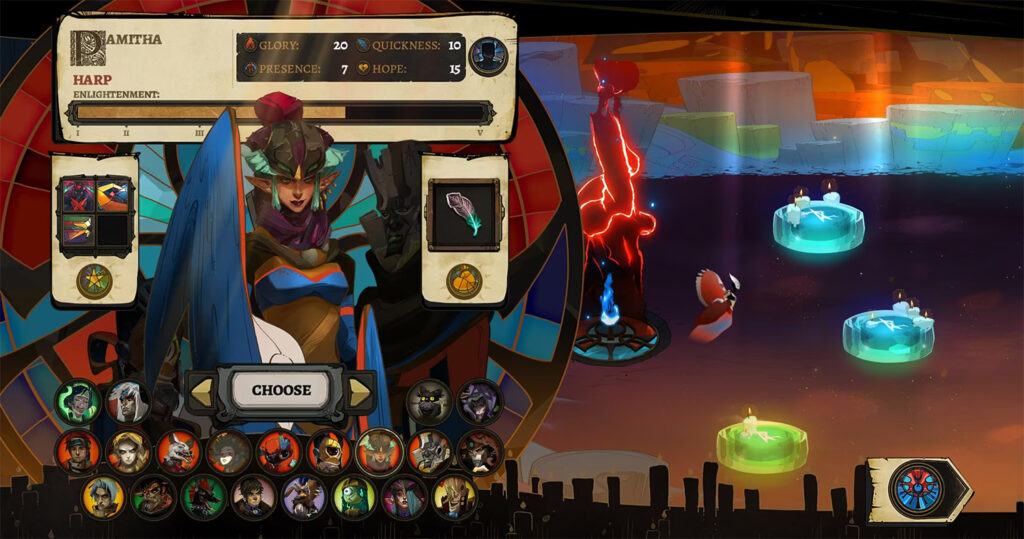
Please let me know through our social channels which games you have played that include sports mechanics and relationships. I have played Pyre, which I think combine those things well. I also have Roller Drama on my to play-list, but I would like to know of more games that focus on sports and relationships (sports relation games!).
A last side note: When there was finally an anime about Water Polo – Re-main – the creators missed the opportunity of telling the amazing story on how this sport might have come into fruition – as a water based version of horse polo, called Polo Aquatic, where players rode on barrels hitting a ball with sticks… I mean, that’s something you can’t exclude!

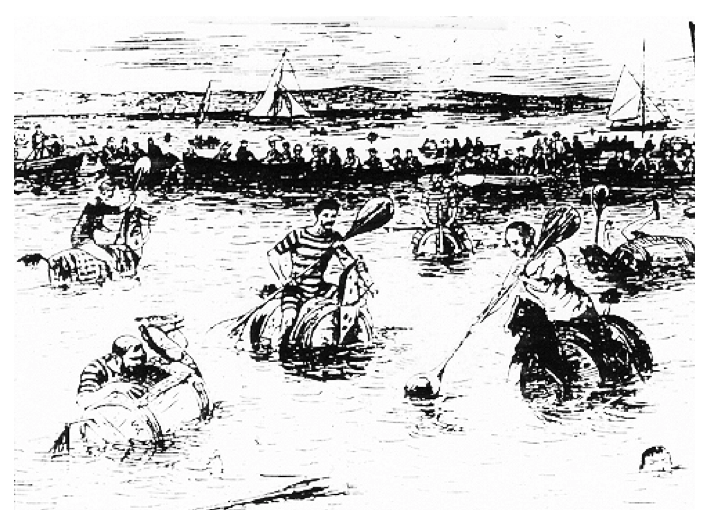
Leave a Reply